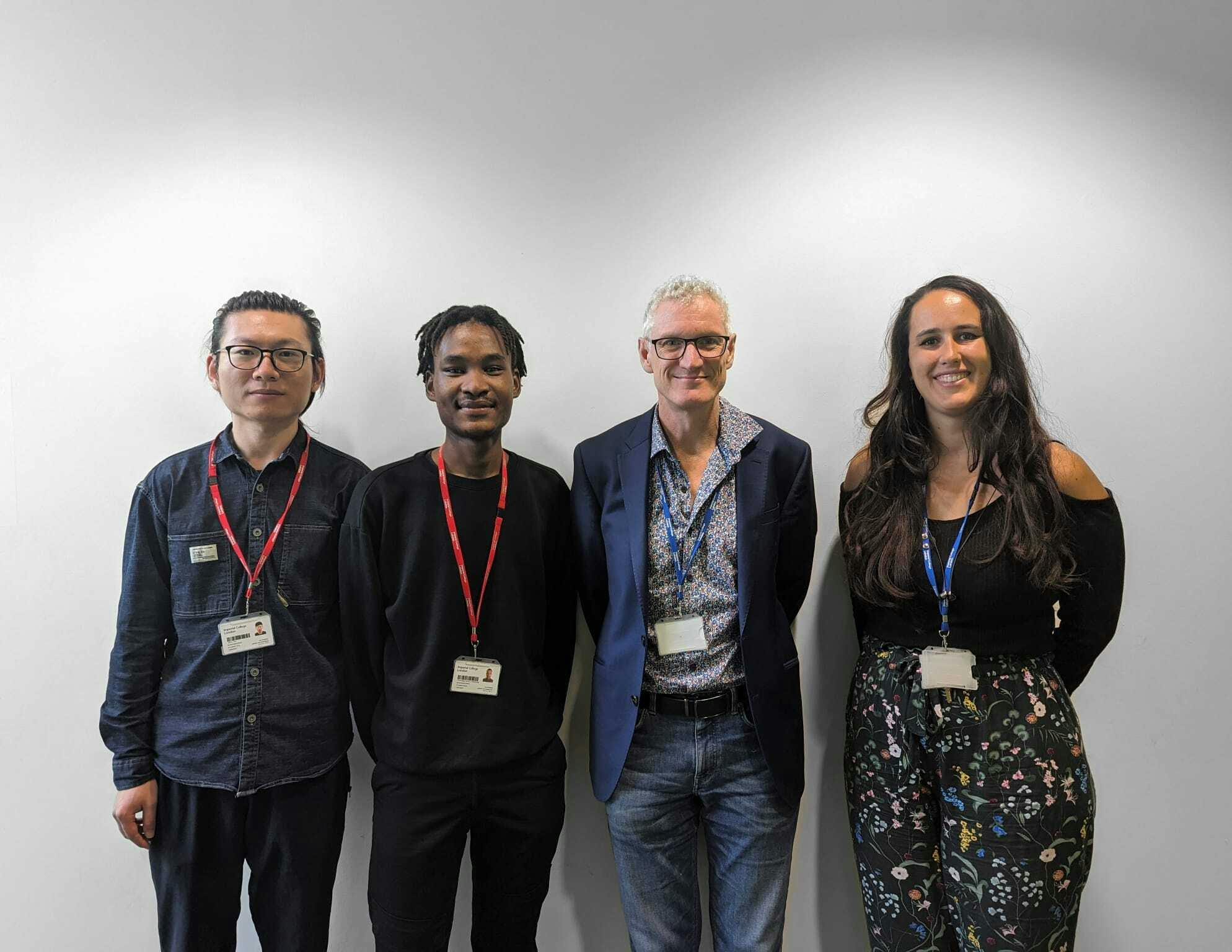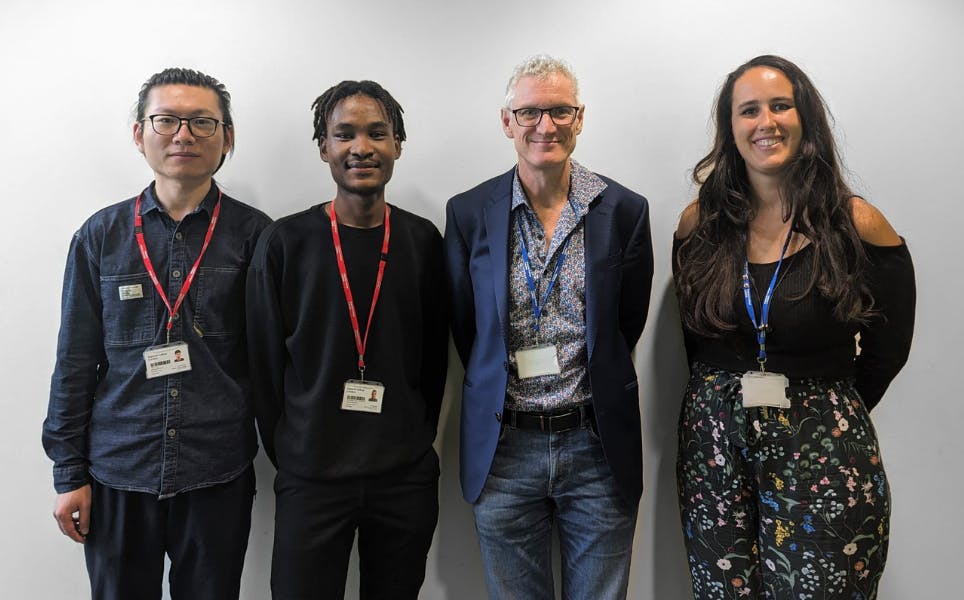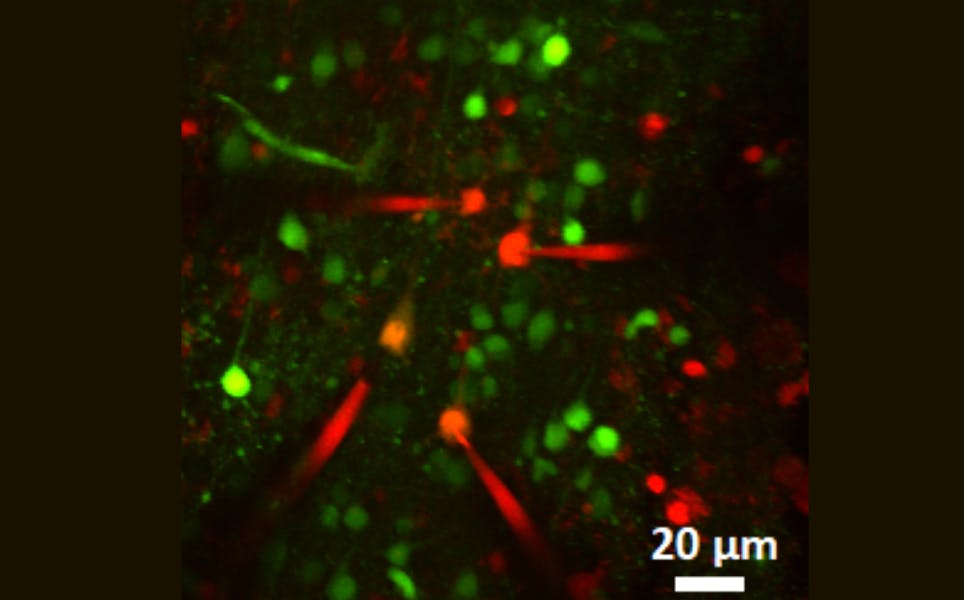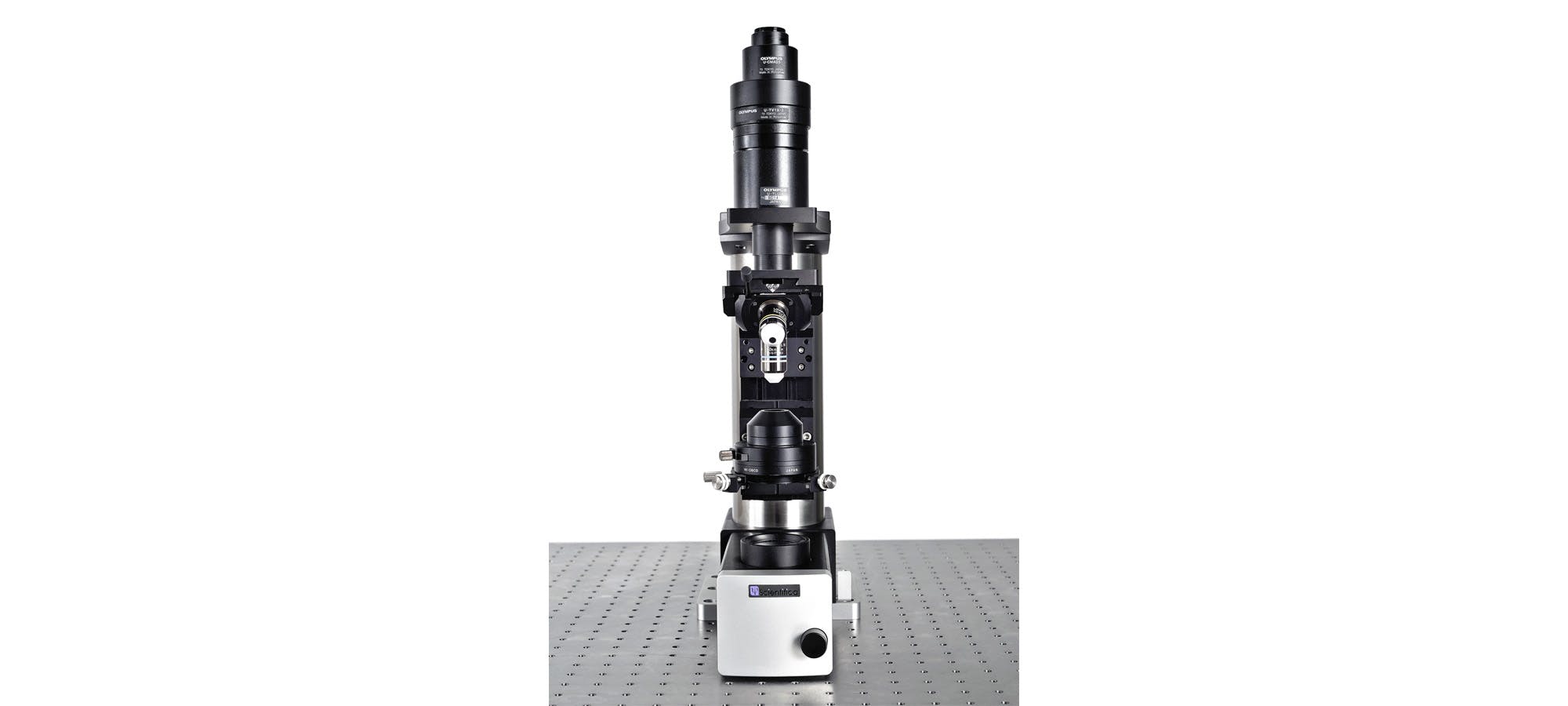
Two-Photon Targeted, Quad Whole-Cell Patch Clamping Robot
We caught up with Dr. Gema Vera Gonzalez, Phatsimo O Kgwarae, and Professor Simon R Schultz, Imperial College London, to discuss their recent research on the development of a system capable of performing multi patch-clamp, both blind and two-photon targeted, for both in vitro and in vivo applications. Their research utilised PatchStar Micromanipulators and other Scientifica equipment to advance their scientific endeavours.

by Dr Gema Vera González, Research Associate, Imperial College London
Research Goal
Developing a system capable of performing multi patch-clamping, both blind and two-photon targeted, both in vitro and in vivo. While there are some automated single, IR-guided, in vitro autopatchers and multi, blind, in vivo autopatchers, no system has achieved in vivo multipatching in two-photon targeting mode. This would allow scientists to answer uncountable questions on the role, behaviour, and connectivity/interactions of specific cell subtypes.

From the left: Jinyu Qiu, Phatsimo O Kgwarae, Prof. Simon R Schultz, Dr Gema Vera Gonzalez
The Challenge
Neurological disorders have devastating consequences in the lives of millions of people, and as the global population continues to age, the prevalence of these disorders will inevitably increase. To address their impact, it is crucial to understand the brain's normal and abnormal behaviour, beginning with the study of its fundamental unit: the cell. The gold standard technique for investigating the type and function of electrically active cells is whole-cell patch-clamp. When performed simultaneously in multiple neurons, this technique allows for precise measurement of the connectivity between cells, providing valuable insights into cell communication and function. However, multi-patch-clamp is a laborious and low throughput method with a steep learning curve, requiring extensive training. Consequently, only a handful of laboratories worldwide perform it.
Addressing the Challenge
We have developed a system capable of performing multi-patch-clamp, making this technique accessible to laboratories globally, with minimal or no training required (Vera Gonzalez et al., 2023). The platform comprises a two-photon microscope, a custom-developed electronically-controlled pressure regulator, patchclamp amplifiers, DAQs and four micromanipulators. These manipulators, steer the pipettes, through the brain, to the cells of interest (chosen by the user in targeted mode) at which point the pressure system applies the required pressure, achieving seal and break-in with the mere click of a button. The manipulators are equipped with clamps that mechanically constraint the movements of the pipettes, to improve resistance against pressure changes, tissue deformation and vibrations (Lalanne et al., 2016). Control of the manipulators and rest of the hardware is achieved through a custom-developed LabView program that directly acquires frames from the microscope. Our user-friendly system features an intuitive interface and several additional features, including pipette reuse (to streamline experimental trials) (Kolb et al. 2016), automated note-taking and data recording, current injection protocols for cell characterization and to ascertain cell connectivity, automatic pipette movement to a certain location, etc (Vera Gonzalez et al., 2023). Thus, the platform is perfect to perform patch-clamp, regardless of user experience: experienced users can save time using the different features and still performing manually whatever parts of the process they wish, while unexperienced users can rely on the software completely to do everything. By successfully automating the technique, our system significantly increases throughput, will save researchers' valuable time, and will enable thousands of new neuroscience studies that would otherwise not be feasible.

Rig Set Up, Using Scientifica PatchStars, SliceScope and Staging
Targeting Specific Neurons Using Two-Photon Technology
What sets our system apart is its ability to target specific neurons using two-photon technology, facilitating investigations into how microcircuits involving particular cells or cell types behave in both normal brain function and dysfunction. Extensive testing of the instrumentation robot has been conducted on ex vivo mouse brain slices. The success rates achieved for targeted and non-targeted modes are 54% and 68%, respectively (Vera Gonzalez et al., 2023). These rates are comparable to manual patching performed by trained researchers, but our automated system offers significantly higher speed and throughput. Moreover, it opens up the possibility of utilizing multiple robots simultaneously, thus potentially multiplying the throughput while minimizing the experimenter's attention and time demands. Importantly, the instrumentation system also alleviates the mental strain on researchers, as learning and performing the technique manually can be demanding and frustrating. Lastly, given the recent emphasis on health precautions, our instrumentation robot provides a more health-conscious approach to conducting research.
However, we want to emphasize that we are not looking to substitute the very hard-working scientists that are already proficient in patch-clamp, but rather make their lives easier by automating other parts of the process (recording and note taking, pipette movements, pipette reuse, etc) and most importantly, making this technique available to all the laboratories in the world that currently do not perform the technique because they don't have a senior scientist that can teach them.
Two-Photon Image of Four Patch Clamped Neurons, with their Corresponding Pipette Tips
Two-Photon Image of Four Patch Clamped Neurons, with their Corresponding Pipette Tips. Brain slices were bath loaded with FURA 2-AM, making the cells green fluorescent. Alexa 594 Hydrazyde dye (red) from the pipette internal solution diffuses into the cells as direct contact with their intracellular spaces is established, making the patched cells yellow (green and red).

Two-Photon Image of Four Patch Clamped Neurons, with their Corresponding Pipette Tips
Working with Scientifica
We found the Patchstars easy to work with, sturdy and reliable. The new motion cards that allow slower movements have been a game changer in our application, as we have seen reduced deformation and disruption of the brain.
We have found Scientifica's technical support absolutely superb. The technicians have always displayed infinite patience in sitting with us and not only solving problems but also explaining to us what was wrong and why. This is the main reason I would recommend Scientifica over other companies.
"We have found Scientifica's technical support absolutely superb"
Dr Gema Vera Gonzalez Imperial College LondonNext Steps
We are currently working on the in vivo optimization of the robot, in anesthetized mice. We are running trials where our main objective at the moment is altering our ex vivo patch-clamp algorithm (Vera Gonzalez et al., 2023) to make it more iterative, to better keep track of the targets during the pipette approach and thus succeed in automating two-photon targeted, in vivo, multi patch-clamp.
Read the full study here
References
- Kolb, I., Stoy, W., Rousseau, E. et al. Cleaning patch-clamp pipettes for immediate reuse. Sci Rep 6, 35001 (2016). https://doi.org/10.1038/srep35...
- Lalanne T, Abrahamsson T, Sjöström PJ. Using Multiple Whole-Cell Recordings to Study Spike-Timing-Dependent Plasticity in Acute Neocortical Slices. Cold Spring Harb Protoc. 2016 Jun 1;2016(6):pdb.prot091306. doi: 10.1101/pdb.prot091306. PMID: 27250948; PMCID: PMC5298902.
- Gonzalez, Gema & Kgwarae, Phatsimo & Schultz, Simon. (2023). Two-Photon Targeted, Quad Whole-Cell Patch-Clamping Robot.
2023 11th International IEEE/EMBS Conference on Neural Engineering (NER), 1-5, 2023








)